With the first “true” week of the 2024 college football season in the books, I wanted to present my all-in-one recruiting guide for College Football 25.
I’m going to put this guide together in the order you would see it play out in-game, so I’m going to start with the preseason and take you through the whole season, Transfer Portal, offseason, and get us right back to where we started.
(This story ran as part of our weekly newsletter, Not Just Another Roster Update, that is sent every Friday to our subscribers. You can sign-up for the newsletter here — it’s the only e-mail you’ll get from us.)
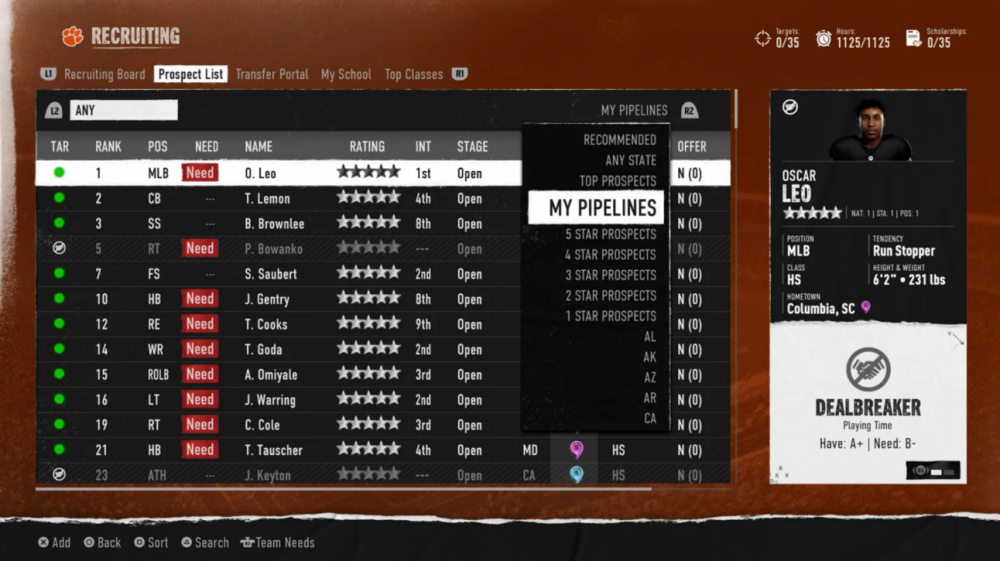
How To Setup Your Recruiting Board
DO offer at least 35 scholarships during Week 1. I talked about this a bit when discussing how Instant Commits work in CFB ‘25, but I want to reiterate that the five points you spend on scholarships are the best value in all of recruiting. This is explained very well by Max Plays CFB.
DO remember that Pipelines are very strong. From there, I would go to My Pipelines and then sort by Rank again. I won’t talk about Pipelines too much because I have guides on them — here is one ranking the best pipelines, and here is one explaining how pipelines impact recruiting and how you can improve your pipelines — but just realize that pipeline strength matters a lot and there are five levels to a pipeline.
- Pink is 5 (the best)
- Blue is 4
- Gold is 3
- Silver is 2
- Bronze is 1 (the worst, but still better than not having one at all)
Think of pipelines as multipliers for any recruiting actions you do, and also realize that blue and pink are way stronger than gold/silver/bronze as a multiplier.
Point being, you might need to be realistic about certain recruits. If a recruit is Open to you but outside your pipelines (or it’s just one of your bronze/silver pipelines), and then you see pink and blue pipelines up and down the projected Top 8, it might be best to just leave that recruit alone. It’s going to be tough to beat those pink and blue pipeline schools if they show any interest in that prospect. Now, of course, you can still offer a scholarship and keep an eye on whether those other teams jump in with scholarships right off the bat, but just know it’s not going to be a fair fight if those pink/blue schools offer scholarships after Week 1.
DO remember that Playing Time is a Dealbreaker. If you add a certain number of players to your board at a certain position and offer them scholarships, this might cause certain prospects to not want to come to your school anymore. So if you’re confused about why some recruit suddenly has no interest in you, always check for that Dealbreaker. Things like Championship Contender can also be a Dealbreaker and why some players give you the cold shoulder down the line as well.
DO NOT fill your board with anything below 3-star prospects in Week 1 (if it all possible). As a better school, this might actually mean trying to avoid anything below 4-stars in Week 1.
You’re going to be able to get 2-star recruits later in the year if you need to, so the only reason to go for 2-star players in Week 1 is if you have House Rules that say as a 2-star school you can’t go above 3-star players that are outside your pipeline (this is one of my House Rules).
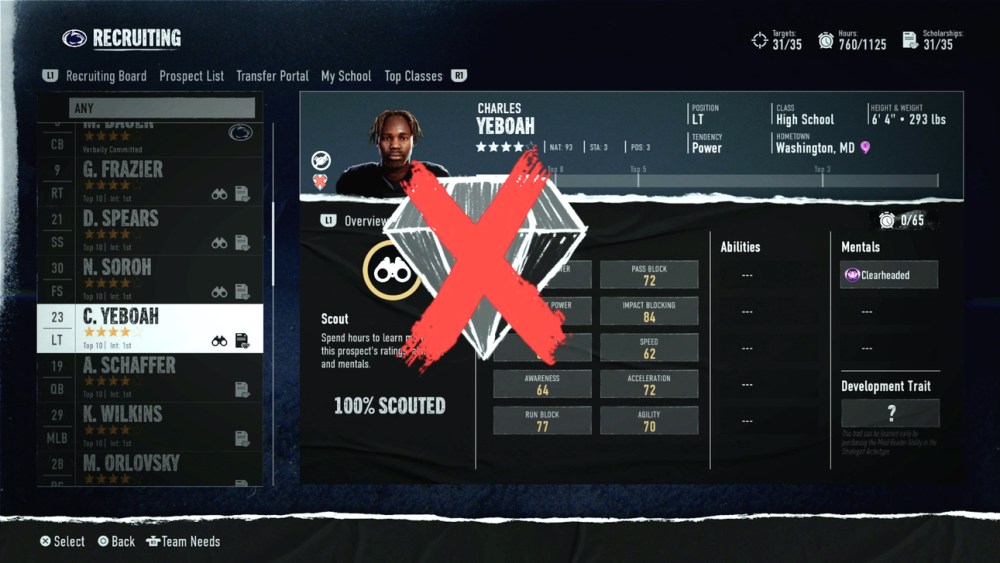
DO scout during the first week, but DO NOT scout much after the first week (if at all). I talked about gems and what they mean in another guide this week (and how they apply to your potential Development Trait), and without going back through all of that, just know that finding gems does matter, but your recruiting hours matter more. Yes, we’d love to scout everyone, but we need to get our players on campus first and foremost. Hours are the only way we can actually get the recruits, so we can’t waste hours on scouting out the “perfect” players after Week 1.
If you’re a small program, you might only have between 600-900 hours to spend in the first week of recruiting. If we set aside at least 175 of those hours for 35 scholarship offers, this gives you the total hours you should spend scouting in the first week. Fully scouting is your choice as that’s the only way to uncover the gem status when you’re a newer coach, but just know that you don’t have to fully scout. As you get better at this, you might realize that you just want to see certain ratings and how they apply to certain archetypes because archetypes and ratings are how you can figure out what abilities a player could gain or already has when stepping on campus. And, in general, abilities matter more than ratings (especially the best abilities).
I don’t think you need to know all the minimum requirements for each ability, but here’s my list of the “best” abilities to seek out when recruiting (these are not in any particular order within the tiers):
- Top tier: Side Step, Shifty, Takeoff, Jammer, 360, Road Dog
- Great: Quick Jump, Ballhawk, Field General, Mobile Deadeye, Headfirst, Wrap Up, Blanket Coverage, Pocket Disruptor
Some of the abilities are “eye of the beholder” so if you have a couple others you would put in those top tiers, that’s perfectly reasonable. Regardless, if you see those abilities on recruits or learn the ratings baselines to get at least a bronze for those abilities, that’s a good leg up and way to save some scouting hours without needing to fully scout.
When your program does become the ultimate badass, then you can start changing this formula a little bit.
If you’re an Alabama or Georgia, then yeah, you can fully scout more often and really just focus on green gems that are 4-star or 5-star players. You can shrink your board down earlier in the process, but you’ll also have far more hours to spend by then (at least 1,200 if not more) and so you can “waste” them.
DO NOT let EA fool you. You can only get 300 players on any one screen in dynasty mode. There are more than 300 4-star recruits every year (it’s usually closer to 400), so if you just sort by 4-Star recruits and the Any tab, you will not see every 4-star recruit — some will be hidden. So you need to be sure to sort by position when you sort by 4-star recruits and 3-star recruits (and so on). The same will likely be true if you sort by My Pipelines, so you’ll also need to add positions there as well.
DO target positions of need and position groups, but DO NOT worry as much about positions like HB. This one is maybe slightly controversial but understand that you will get a chance to change the positions of players during the offseason. The RB position is one of the easiest to find among your other position groups. Wide receivers are great because they can be converted into running backs, tight ends, corners, and safeties. To some extent, you need to recognize that certain player archetypes will dictate how good these players might be at their new positions, but just remember to be flexible during recruiting.
I’m not saying to ignore that 5-star HB recruit if you think he looks rad and he’s interested in potentially joining your squad, but just remember there are other avenues out there. If there are 10 great tackles that you’re intrigued by but you know you need guards and centers more, don’t just ignore those tackles. They could be converted into guards and centers once they’re on campus. The same rules apply to the defensive line, your linebackers, and your secondary.
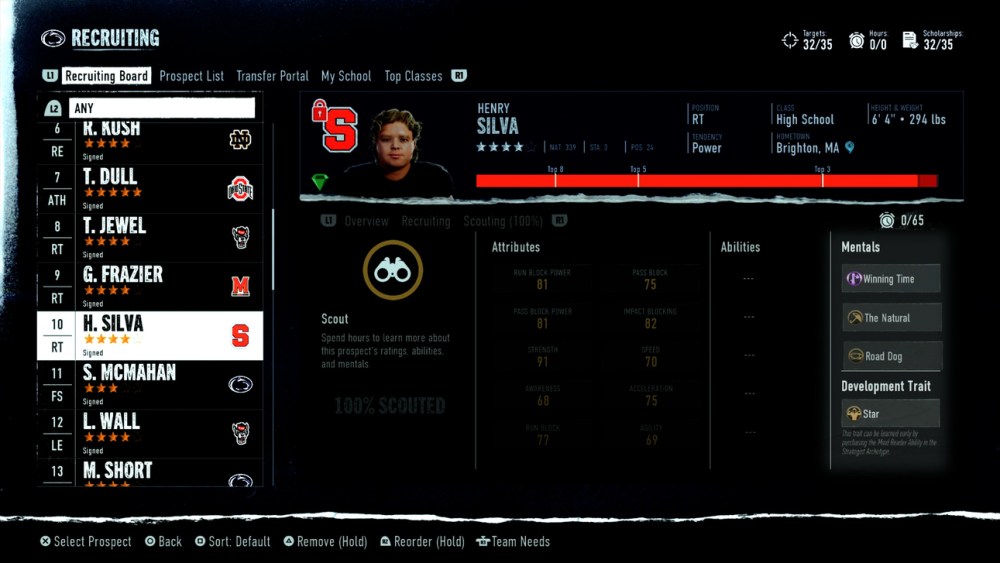
DO understand that Mental abilities are locked in from the start. There are Abilities and Mentals that show up for players in recruiting, but you need to realize Mentals will never be earned or upgraded (unlike in Road to Glory). Your players don’t get to earn Mentals during their career. That said, I don’t think most of the Mentals are a huge deal, but if you see Road Dog or Field General on a recruit, certainly take note because those are both very good abilities (especially when they’re at Platinum).
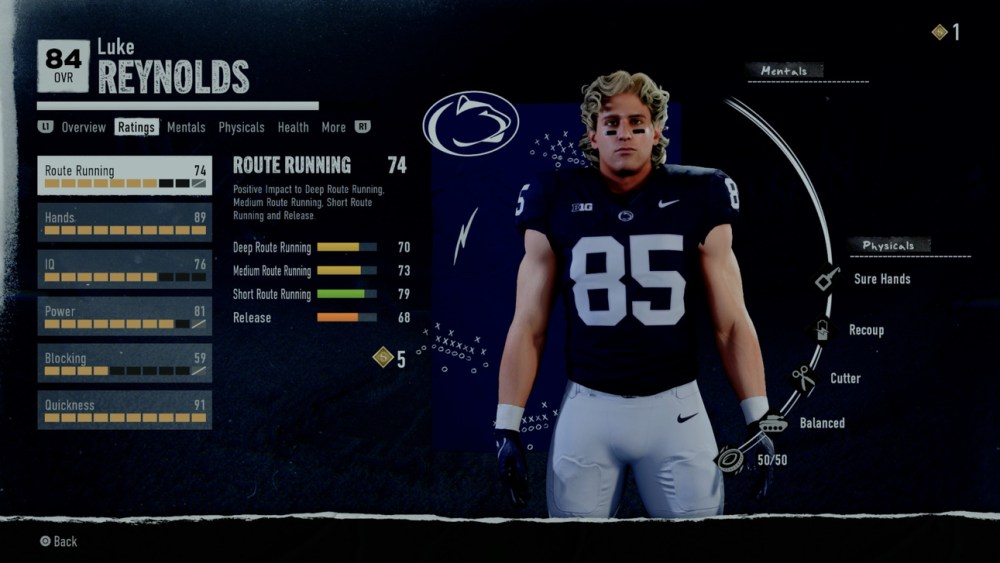
DO understand basic player progression concepts. I am going to do a player progression guide in the near future on OS because College Football 25 probably has my favorite progression system ever introduced in an EA game — but it’s not explained by EA anywhere in the game. That said, if you don’t know how player progression works, it’s not imperative you understand the ins and outs of it to get the most out of recruiting (we’re just trying to get these players to commit to our schools!), but there are some ground rules to remember.
- The higher the star count on a recruit, the higher the initial rating will be when he gets on campus. There’s a general range that these recruits will fall between depending on their stars, with five stars obviously coming in with the highest initial ratings.
- Development traits apply to how fast your recruits will earn XP on campus. XP is how players accrue coins to buy ratings upgrades and abilities upgrades. You have no control over what your players spend their XP on, but you still want them to have as much XP as possible to spend on themselves.
- Ratings skill caps and development traits are separate things. The development trait is how fast your player can develop, and skill caps define the ceiling (or max potential) of your player. Even if you get an Elite Development Trait player on campus, he might still have a lot of ratings skill caps (it’s those little gray boxes next to the ratings bars when you’re viewing the Player Card of your player in the View Roster screen). This means he might be able to earn a lot of XP, but he could still have an overall rating ceiling due to his skill caps. In other words, no matter how much your player grinds out great stats, he might not be able to reach a 99 overall or reach certain thresholds to buy certain abilities.
- There are various upgrades to target in the coaching abilities trees to boost the amount of XP earned and even raise skill caps, which are powerful abilities, so just remember they exist.
This is all a way of me saying there are limits to everything. Even if you uncover a 2-star recruit with an Elite Development Trait, he might come in with low skill caps and a low starting rating of 58. If he goes up 20 points in overall between his Freshman and Sophomore year, that’s great, but that might still mean he ends up being an 83 overall or so by the time he’s done with the majority of his leveling up.
Alternatively, you might find a 4-star recruit with just an Impact Development Trait. Well, he might take longer to level up, but he’s probably still going to end up with fewer skill caps and end up a higher overall player a majority of the time.
I’m not saying red gems are a market inefficiency (the Normal Development Trait is bad and you don’t want it, and many of the red gems will have it), but there’s still a range of outcomes to consider. Five-star Normal Dev Trait red gems are still going to be better players than three-star Impact/Star Dev Trait players on the whole when it comes to most position groups.
Either way, if you do get players with Star and Elite Development Traits, be happy, and make sure they play earlier than later (you can still Redshirt them their Freshman year if you want, it’s generally still a positive).
DO be sure to at least look at your team’s schedule. This is one of those min/max things I don’t think you really need to do because Scheduling Visits is a secondary priority a lot of the time within recruiting to me, but if you want to get an “easy” home game on your schedule around Week 4-6, that’s a good time to bring in some recruits and try to get a massive edge or even secure some early commitments.
Quick Coaching Abilities Rundown
This recruitment guide mostly ignores coaching abilities because I’m just trying to teach you the fundamentals, but you should be aware of the skill trees and certain abilities in them.
If you want to build the “perfect” recruiting coach from scratch:
- You should start as a Recruiter archetype.
- You’ll want to fill that first chunk of Elite Recruiter abilities up to 4/4 for most of the positions. And when possible, start filling out that second set of abilities in the tree.
- Master Motivator is the other track to get that would be within reach earlier on in your career. You want to get those Tier 3 abilities that give an off-season training boost to your current players.
- After that, it’s mostly about what you can reach. Talent Developer, Architect, Program Builder (how you strengthen your pipelines), and CEO all have good stuff in them.
- You need to remember that coach abilities “stack” so if your assistants also have the same abilities as you, they’re even more powerful.
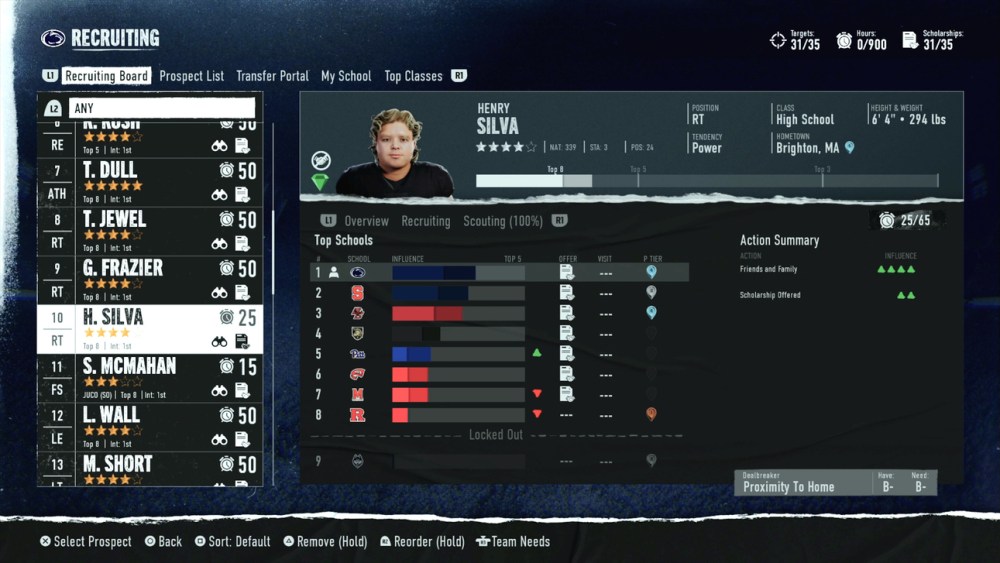
Let The Games Begin
Okay, that first section is the longest because it’s the most important. Setting up your initial board and understanding how to look for prospects sets you up the rest of the way because a lot of the actual recruiting is straightforward or simply based on your own intuition and desires. You won’t need to deviate too much from a set structure during most weeks. Instead, you’ll have a general workflow in place and then you’ll be making exceptions for certain players that you think are worth it.
In fact, I think if you simply understand how the mechanics of recruiting work, you don’t need too much of a guide for most of the process after you’ve setup your initial board. You’ll come up with your own game plans because you understand the systems at work.
With that in mind…
DO remember that it’s a marathon not a sprint. Players are going to need to cut their lists down to their Top 8, then their Top 5, and then their Top 3. Instant commits can interrupt that process, but most of the time, the “real” race does not begin until you get into the Top 5 (if not the Top 3). You just want to make sure you stay in the race at the start of things, which means just making the cut list.
So at the start of the real recruiting season (assuming you gave a scholarship during preseason scouting), you usually have to go all-in with as many points as possible as soon as possible — a minimum of 50 hours, and more than 50 if you’re allowed to based on where you are in the coaching skill trees — if you are not in the Top 8 for a player you really want. You can maybe let your foot off the gas a bit after getting into that Top 8 depending on how things look, but you need to get there first.
This also means I DO NOT want you to get tricked by the green arrows and red arrows next to recruiting actions. EA put in all these green arrows and red arrows for actions, but you shouldn’t treat each green arrow like it’s additive.
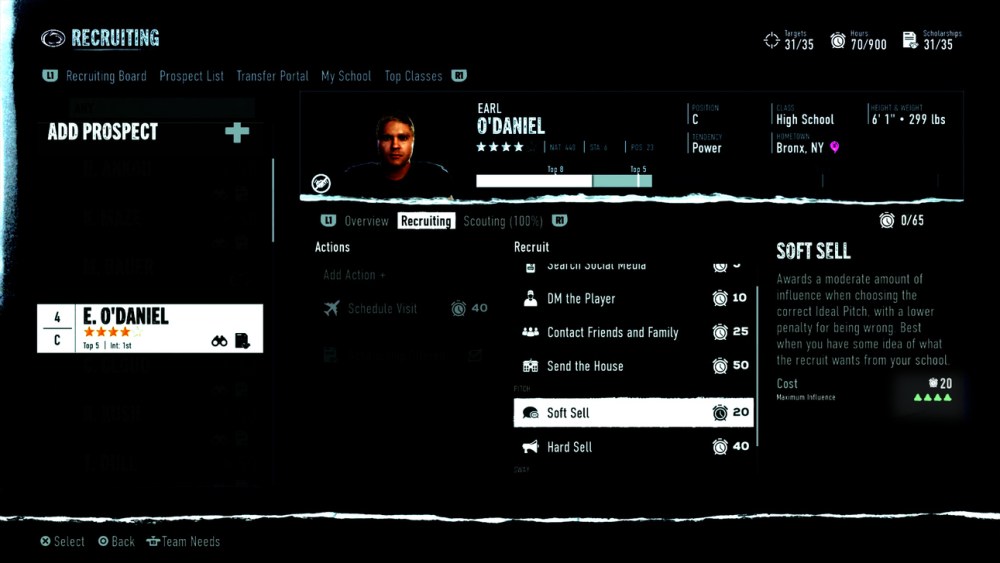
Send the House is five green arrows and 50 hours. Contact Friends and Family is three green arrows and 25 hours. DM the Player is two green arrows and 10 hours. You might be thinking “DMing and Contacting Friends is five green arrows and only 35 hours, that’s better value than five green arrows and 50 hours for Sending the House!”
Well, here’s the thing…
I think EA meant for the green arrows to show how powerful an action is at each step of the process. When it’s only in the Top 8, you can only do the four Influence actions (Social Media, DM, Friends and Family, Send the House). The point is Send the House is the strongest and best thing you can do in the Influence section. The other three can still be additive and helpful but they’re icing on the cake.

DO understand how the influence bar works. This is one of the most important things to understand and analyze each week. So here’s what to look out for on the screen:
- The amount of influence you earned from last week is that darker area of influence in the progress bar for your school. If you gave it everything you got and only went up a small amount, it doesn’t mean that’s how much your influence will go up every week, but it’s still probably a bad sign.
- Always take note of the pipeline tier. If you’re a bronze pipeline or non-pipeline for a player you really want and are #1 in the rankings for now, look what’s below you in terms of pipelines. If you see some dangerous pink and blue schools just outside the Top 5, you want to close the deal as soon as possible to hopefully lock them out. The longer those stronger pipelines stick around, the worse it gets for you down the road.
- The influence bar resets when you get to Top 8, Top 5, and Top 3. This does not mean you don’t want to overflow the bar from one week to the next — you’re still going to get credit for the hours you put into a player as your actions will start refilling that bar during the next week — but it only takes one team reaching the top of the influence bar to make the cutdown between Top 8 and Top 5 and so on occur.
The best way to understand this is by looking at a visual comparison from one week to the next. Take note of Oregon’s progress in this first week — that darker green area is how much influence they earned from last week to this one:
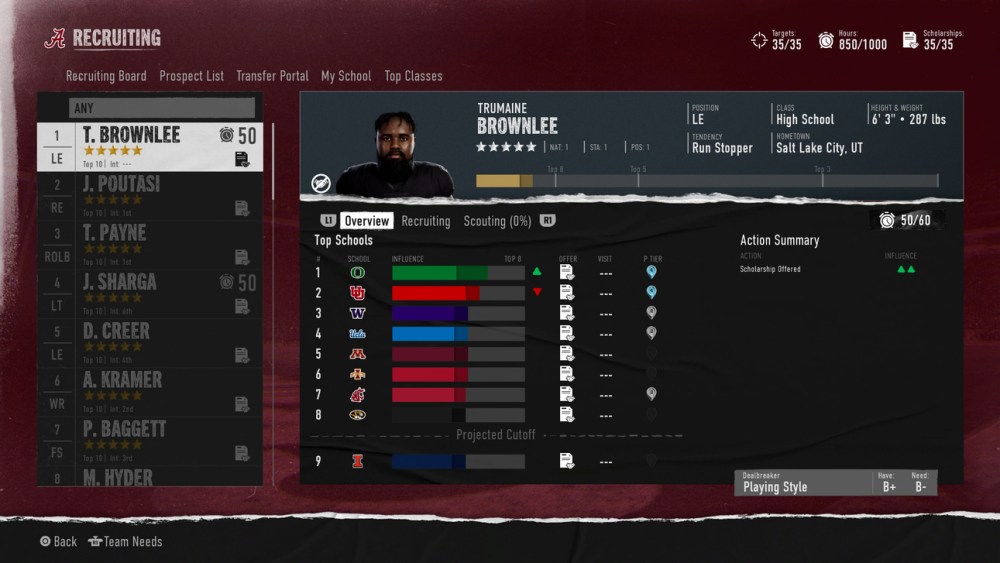
And here’s the same player’s influence bar one week later:
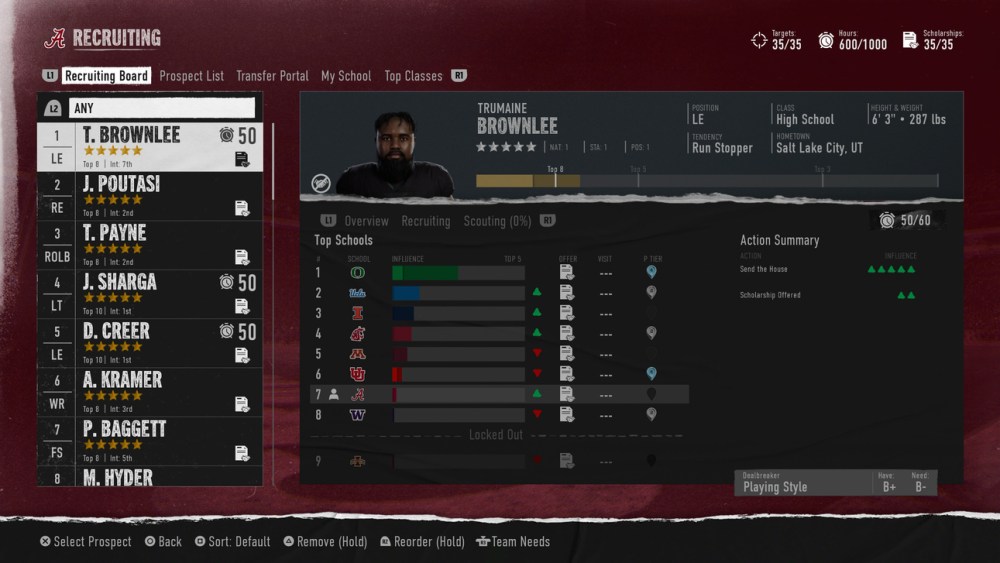
Notice that the cutoff occurred, so we went from Open to Top 8 because Oregon likely filled out that influence bar and reset the influence game. Also notice that Oregon didn’t “waste” their hours by recruiting this player hard even though they were basically guaranteed to make it to the Top 8. Their actions “overflowed” into the new influence bar, and they have already filled up the bar halfway as we now push towards the Top 5 cutoff.
As Alabama, note that I was not on the Top 8 list the week before (and have no pipeline), but am now 7th this week and made the cutoff. I went in blind and it maybe wasn’t the best idea to pursue this recruit because Oregon was already close to resetting the game, and even 8th place Missouri had already filled the bar over halfway. I had no idea where my Influence was in comparison because I was not on the Top 8 list. But because it was a 5-star recruit, I Sent the House and hoped for the best.
It worked out for now, but now you have to reassess if it’s worth it again. Oregon is likely to turn this into a Top 5 race as soon as next week going by that progress bar. There are two blue pipelines ahead of me, two silver pipelines, and then two non-pipelines (like me) in the race. Based on how full the other influence bars are right now, I think it’s safe to assume I could get into the Top 5 if I Send the House again.
Let’s skip ahead a week and reassess once more:
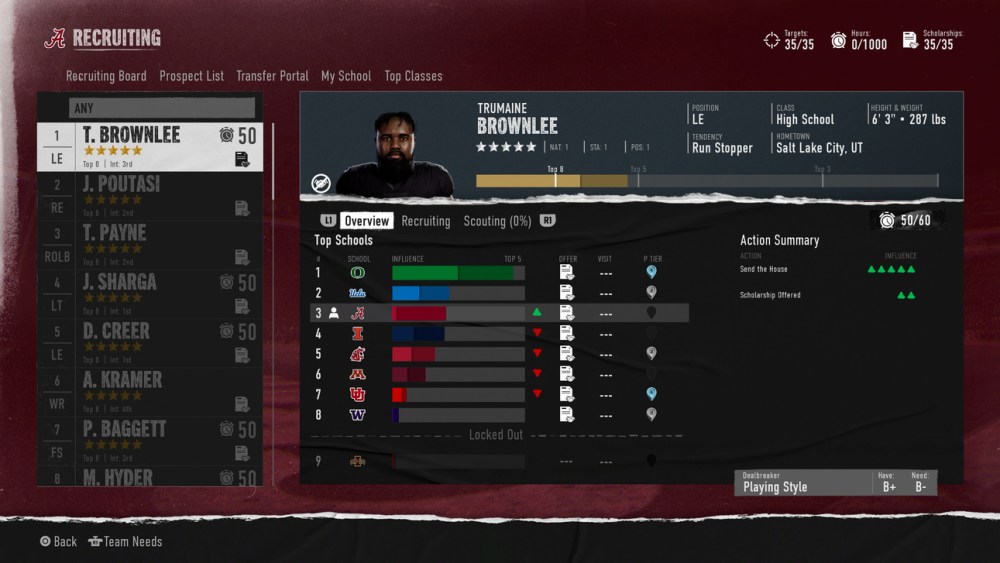
It turns out we have one more week of Top 8 as Oregon did not quite get the other half of the bar filled in. As Alabama, we have also made a sizable impact and have now moved into the top 3 schools. Here is where you can start playing a little game of chicken with yourself. You only need to be in the top 5, and we clearly earned more influence than everyone other than Oregon last week by Sending the House. Maybe we need more hours elsewhere for a more dire situation, could we spend fewer than 50 hours this week?
Well, there’s only one blue pipeline outside the top 5, and everyone else but Alabama has a red arrow that shows they had a down week. We are a non-pipeline and this is a 5-star recruit, but it’s possible even with just a small lead over 4th and 5th place that we could ease back just a bit on hours if necessary and still make the cut. However, since I know we’ll have a Top 5 cutdown by next week, I don’t want to take a chance here with a 5-star recruit so I’ll stay with the 50 hours.
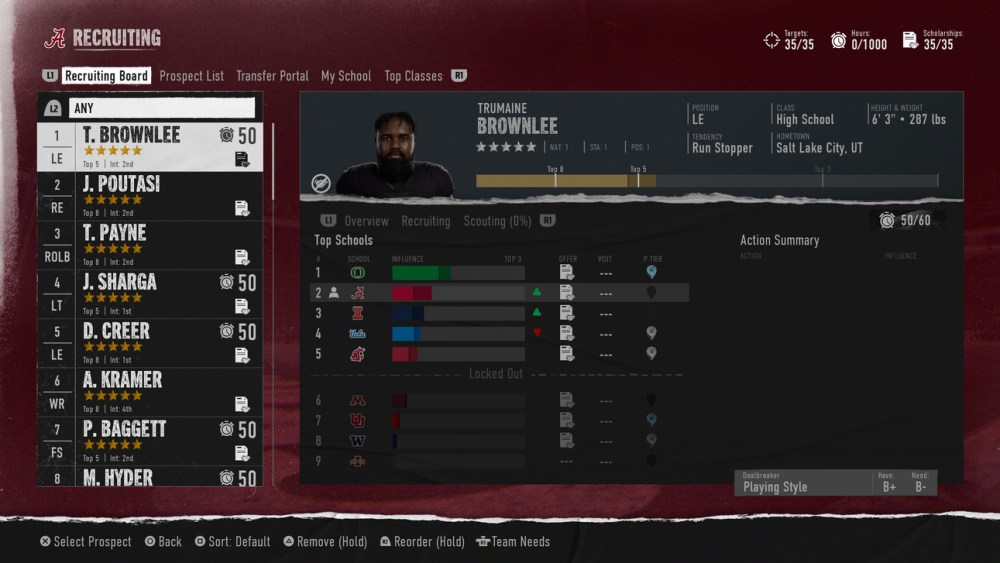
We kept our foot on the gas, and we made it to the Top 5. In fact, it looks like we’re even outpacing Oregon since last week. We’re still underdogs because they’re a blue pipeline, and based on this prospect’s desires I also know he wants to play Close to Home, but it’s now time to understand the later stages of things.
The Final Push
As we get into the Top 5 and Top 3, more options for recruiting become available. You can Hard Sell, Soft Sell, Sway, and Schedule Visits. Much like the first set of options, there is a best option here: it’s Hard Sell.
DO remember that Hard Sell and Send the House are now your best choices. Hard Sell is now the BEST option if it meets The Rule of 19, also courtesy of Max Plays CFB.
This is one of my favorite recruiting tricks I’ve learned all year because it’s so simple but so mathematically delicious. The grades on each motivation range between A+ and F. Between A+ and F there are 13 options, so we convert letter grades into numerical values. So we convert A+ to 13 and F to 1.
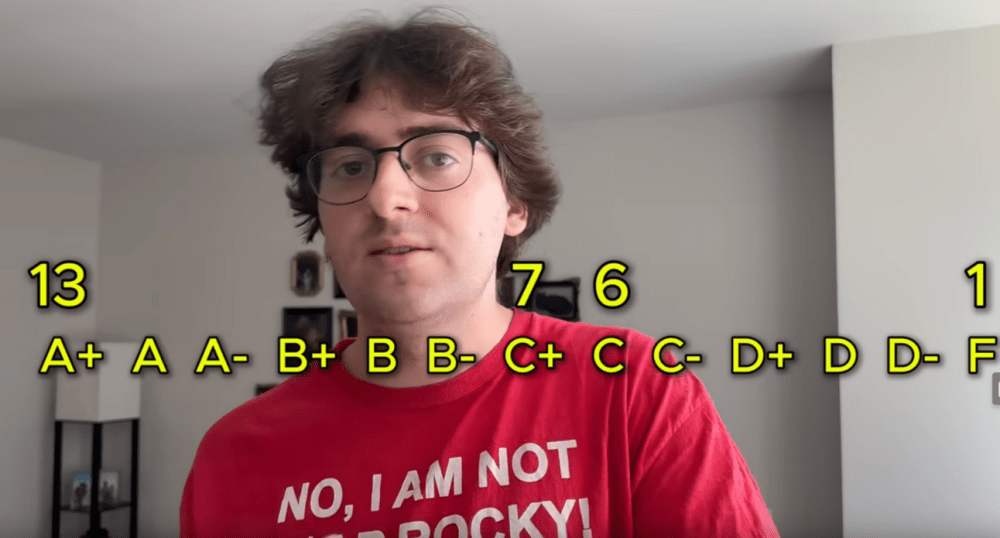
If our Hard Sell for the three green checkmark motivations meets or exceeds 19 points, it’s better than Sending the House. So if we have an A+ (13) a B+ (10) and a D- (2) that’s 25 points. What that means is in this case we should Hard Sell (and then maybe add 10 extra hours by DMing the player if we still feel like using at least 50 hours). And you can use that Hard Sell for multiple weeks if you want, just like we did for Sending the House.
But we still need to know what to Hard Sell, and the Hard Sell is a little puzzle game of its own. If you’ve been Sending the House for a couple weeks and now go to Hard Sell, you can look at the red, green, and gray boxes next to the Motivations for the recruit. The issue you’re probably going to run into is that you’re not going to know all three top motivations for the perfect pitch.
Well, we can solve this puzzle a couple different ways.
- Even if all the boxes are gray, we always know one green Motivation, and it’s the Dealbreaker. For that recruit we’ve been working on, we know that’s Playing Style because it’s in the bottom right corner on the Overview screen.
- Now when we look at the red/green/gray boxes, if we have a green check that is not the Dealbreaker, then we actually already know 2 of the 3 Motivations.
- In many cases, we can now do a process of elimination and just go through all the pitches. So let’s return to our recruit:

So it could be “Time To Get To Work” as we know Playing Style is one of the Motivations due to it being the Dealbreaker, thus just leaving a gray box for Playing Time.
However, there’s another possible option:
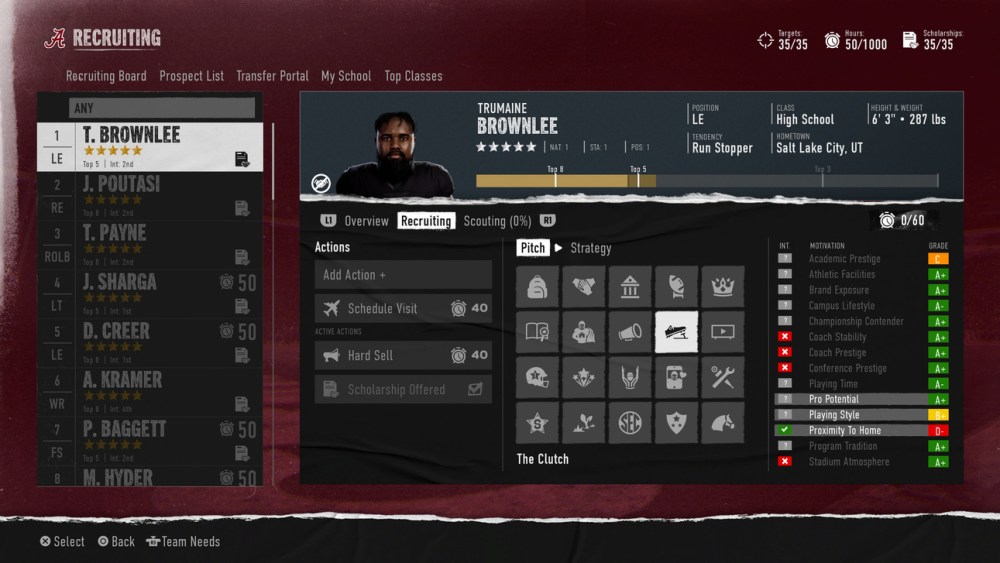
Unfortunately, there is a gray box rather than a red X through Pro Potential, so this could be the perfect pitch as well. In a lot of situations, what we tried will work though, so always do that check first.
In the cases where that does not work, what do we do?
- We could Soft Sell either of these options, and if we’re wrong then next week we’ll usually know the perfect pitch because Soft Sell reveals the best pitch. But that would cost us 20 hours.
- We could Sway by also picking one of those two choices and hoping it just adds the third gray box as a green check either way, but that’s 30 hours. Also it’s not guaranteed that it will add the green check box because Sway doesn’t always work.
- We could skip both options and just Schedule a Visit ASAP with his Dealbreaker of Playing Style selected since we know that’s right, but that’s 40 hours.
Well, 8 out of 10 times, the answer is to just default back to Send the House and ignore those other three options. The other two times, it could be Schedule a Visit, but this leads into our next piece of advice.
DO NOT use Soft Sell, Sway, or Schedule Visit as primary recruiting tools. These are all just toppings on the sundae. The same goes for DM, Social Media, Friends and Family. Hard Sell and Send the House are always the strongest tools you can use to win these battles. Every other option has specific uses.
DM/Social Media/Friends and Family are the things you use when you just don’t have the hours for anything else or just want to add a little extra bit on top of the main selling point.
Sway can be used as a supercharged mechanic in rare instances. Remember that player I’m targeting right now is a non-pipeline for me, so I might need more help than usual to win the battle against blue pipeline Oregon. The point of Sway is to try and flip one red X into a green checkmark because at least one of the current green checkmarks is an awful grade for me and would impact the Rule of 19. If Sway works, I will in effect create 4 green checkmarks when there is usually only 3 — and it will be just for my school.
In a perfect world, this means after Sway works I could both Hard Sell and Soft Sell two different but viable pitches at the same time if I have a coach ability that allows me to use 60 hours a week on a player (and hopefully each pitch meets the Rule of 19).
Even in this rare instance, it’s usually not worth it because you still have to hope Sway works in the first place. (By the way, only use Sway when you already know at least two of the green checkmarks, it’s super rare it works when you only know one. You can use Sway again the week after if it didn’t work the first time, but don’t do that ever because it’s a massive waste of hours.)
As already explained, Soft Sell exists for the super-specific Sway cases. It is also a substitute for hours when you can’t afford to use them on a Hard Sell, or to decipher the rest of the Hard Sell without negatively impacting influence too much when you know just 2 of the 3 motivations.
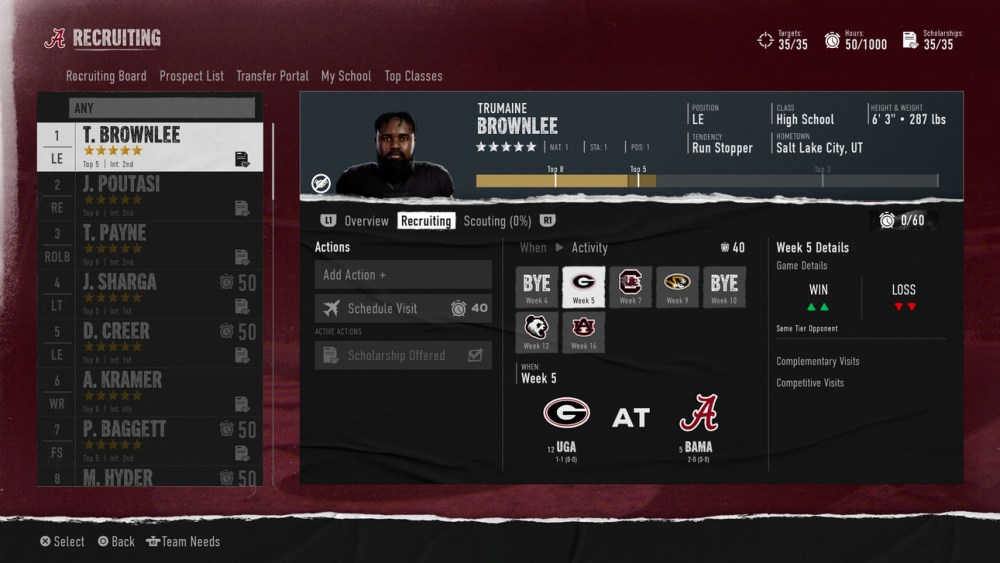
Scheduling a Visit is the “sometimes” option because those are 40 hours that are a one-off. Sort of like offering a scholarship, you spend them once but those hours don’t count towards a player’s weekly hours, so they’re a true bonus. But we need to be decisive with our Visits.
DO NOT schedule visits that won’t happen for several weeks. If we’re in Week 4 and we can schedule a visit for Week 5, then it can be worth it to try and really seal the deal early in the process. It’s also okay if you lose the game or schedule a visit during a Bye week. No, you won’t get as much value, but it’s not going to be super negative value either. You have to accept that Visits are a little inefficient by default but have some potentially big payoffs, especially if you’re the first team that gets to schedule a visit.
You want to be first. If you ain’t first, you’re last.
So don’t schedule a visit for Week 11 when you’re in Week 4. It’s a waste, and the recruiting battle might already be over by then. Only schedule them when you can get them on campus within the next week or two, and it’s truly best if you get the first visit. After all, when you Schedule a Visit you spend the 40 hours right away, so why would you wait 6+ weeks to get a return on that investment?
Oh, and obviously use the Dealbreaker as the on-campus pitch if you don’t know any other green checkmarks, but use whatever motivation has the highest grade for your school if you know multiple green checkmarks.
Complementary visits are nice-to-have as well, but they’re not necessary. If you don’t know, you can schedule up to four players for any one week. They’re complementary visits if you have a QB/HB/WR/OL all there together (you can have just a QB/HB, HB/WR, etc. and it’s still complementary as well). The same idea goes for defense. They’re “competitive” visits if you have multiple players at the same position visiting on the same week, and that can result in some negative outcomes.
Beyond all the balancing acts we’re doing with our hours while trying to decipher perfect pitches and prioritizing which recruits to target, we need to remember two more things as we tune our regular recruiting schedule. DO NOT forget to add some more prospects throughout the year, and DO NOT forget that the big dogs are coming for your ass.
As the weeks go by, you’re going to lose out on prospects or just lose interest in certain ones. When you go back to that Prospect List, the best way to figure out which players you might be able to snag is by going to the Offer column and sorting it so you can look for N (0).

These are prospects who have received no scholarship offers, and they’re usually the ones you can make the most progress with if you just offer a scholarship and show immediate interest. (This was a bug at launch because too many good players would receive zero scholarship offers for far too long. It’s not like that anymore.) I would consistently check back on the 4-star prospects and 3-star prospects. These are the players who can help fill out your recruiting class.
But don’t forget about the big dog schools when it comes to prospects like these. EA has a really cool and logical concept here with how recruiting plays out. You might think it’s okay to play it safe with some of these guys who didn’t get a lot of early attention, but don’t forget how priorities work in this game. Some of those big schools aren’t looking at some of these lower-end 4-star players or 3-star players because they’re focused on 5-star guys or specific 4-star recruits (just like you). But as commitments start to pile up, those other schools are going to have hours to spend as well. And so when those pesky pink and blue pipeline schools start sniffing around your prospects again, those new toys you think you found could end up stolen as well.
As for striking out in the late stages, a fun little side note is that until you remove a prospect from your Recruiting Board, he retains one of your scholarships if you offered him one. So let’s say Player X was someone you really wanted, but you ended up second and lost out to College Y. You need to remember that verbal commitments are just that (verbal) until Signing Day. If College Y ends up tanking the rest of the season and Player X had a Championship Contender Dealbreaker, he could decommit and then commit to the second-place school (you!).
It’s not the only outcome that can happen, but just realize Dealbreakers are why you might see certain players pop back into the Prospect List later in the year, and why in rare cases it’s worth keeping certain players on your board even after they’ve committed elsewhere.
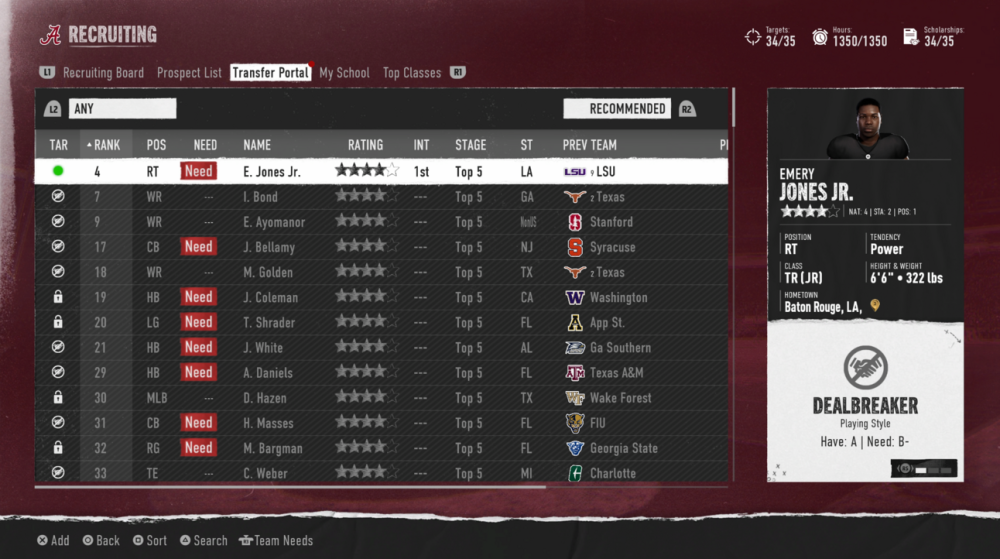
Transfer Portal And Offseason
Phew, now for the easy part. You’ve been racking up recruits all year long, so DO NOT overthink the Transfer Portal. It’s all the same rules but now you’re going to have more hours than you know what to do with, and everything just goes much faster week to week. Offer scholarships right away and try to schedule visits (yes, they’re still good even though you don’t have games) as soon as they’re available, and spend as many hours as possible on the players you want.
You don’t need to fill up the Influence bar all the way and get through the whole Top 3 process, the recruit is going to sign with whoever has the most Influence at the end of the transfer window — the same goes for stragglers still on the Recruiting Board. In other words, you can play the same game you did when we were trying to figure out how much to spend on certain prospects while still making it to the Top 8/5/3 cutoff. You just need to be in first by the last week if that player has not committed by then.
Managing Staff is also not part of this guide, so I just would reiterate that stacking skills does give off bonuses, but spreading out your abilities to other trees via your assistants is perfectly fine as well.
Persuading players is straight forward, it either works or does not. There are coach abilities you can get that will give you multiple chances to talk players out of leaving, plus give you more chances to persuade more players (within the CEO and Program Builder trees).
If we skip ahead to Position Changes, here’s a 70 overall WR as a reminder why they’re a position that’s worth targeting even if you don’t need WRs:
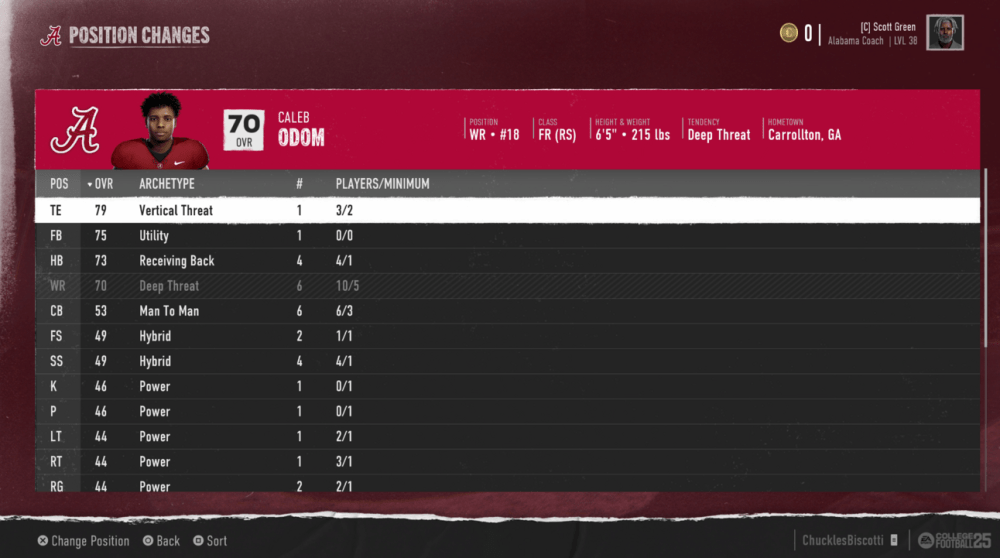
And that is really all you need to understand for recruiting. Things like how to maximize your offseason training results and such will have a place in the player progression guide I’m working on, but either way you should now have a base-level understanding of all facets of recruiting. I hope you utilize any knowledge you got here to optimize your own recruiting and innovate a bit because you fully grasp all the major mechanics.
Of course, you can have plenty of fun without min/maxing recruiting, and I use some House Rules for my own “serious” dynasties because min/maxing isn’t my preferred way to have fun, but it’s still helpful to know how everything works.








Published: Sep 4, 2024 02:17 pm